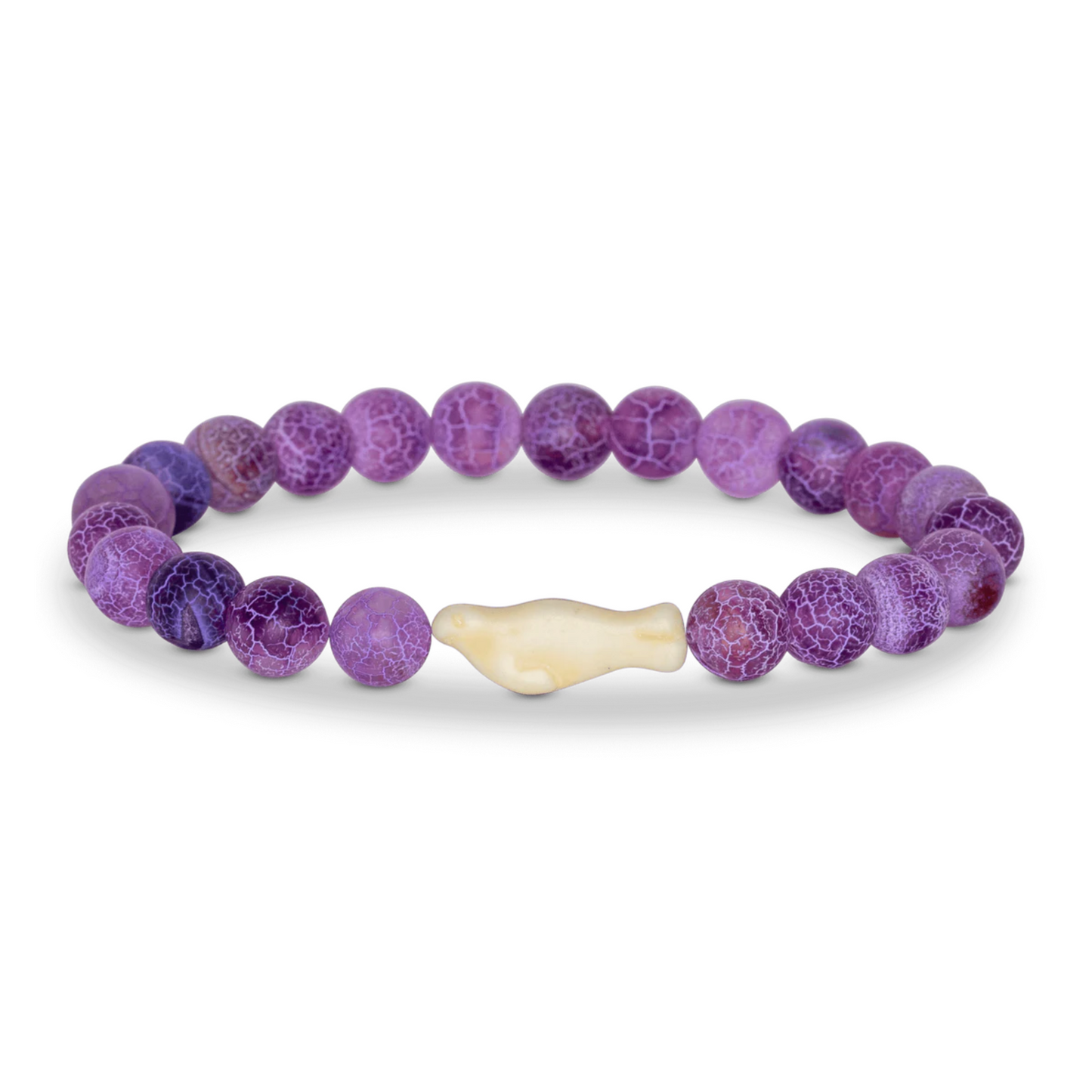Fahlo
Animal Tracking Bracelet - Glide Seal - Coral Reef Violet
Animal Tracking Bracelet - Glide Seal - Coral Reef Violet
Couldn't load pickup availability
Dive in, the water’s freezing! Created in partnership with UC Santa Cruz Beltran Lab + Seymour Marine Discovery Center, each seal bracelet unlocks an interactive tracking map and directly supports marine megafauna conservation worldwide and their work protecting northern elephant seals on California's coast.
Meet your seal and learn their story. Follow their path on an interactive tracking map. Reveal exclusive stats, photos, and updates along the way.
- Brand: Fahlo
- Stone: Coral Reef Violet
- 10% of profits donated to UC Santa Cruz Beltran Lab + Seymour Marine Discovery Center
- Sizing: Elastic, one size fits most
- QR code provided to unlock interactive map - compatible on smart phones only.
How does tracking work?
- Tracked via SPOT (Smart Position and Temperature) tag
- This animal’s safety guarded with the Fahlo Protection Ping™
Every Fahlo tracking experience includes the Fahlo Protection Ping™. This indicates each animal’s unique path may be live, delayed, or historical based on required safety protocol in accordance with our nonprofit partners.
While the experience of following an animal’s journey remains the same for you, we work behind the scenes with our partners to ensure this experience is presented in a way that keeps the animals safe, one step or splash at a time.
Why are elephant seals tracked?
Elephant seals are tracked with electronic instruments for a variety of reasons, including where they travel and feed during their foraging migrations, how they expertly navigate through the ocean, how much they are able to eat during foraging trips, how they avoid predators like white sharks and killer whales, and even how they sleep.
The elephant seal tracks researchers have shared with Fahlo are also helping scientists learn how these behavioral strategies are different between male and female seals, and how they develop as seals grow older. In recent years, elephant seals have helped scientists understand more about the ocean environment by carrying tags that collect information about chlorophyll content, dissolved oxygen, light levels, and the distribution of small fish and squid in the twilight zone (200–1000 meters deep) of the ocean. All of these metrics of ocean health provide valuable insight into the distribution and abundance of important resources that large predators like elephant seals rely on.
How are elephant seals tracked?
Elephant seals are tracked in a couple different ways. First, a select few seals each year are equipped with flipper tags with a unique alphanumeric ID that allows researchers to find them on the beach each year and record their age, whether they are raising a pup, and which other seals they are interacting with.
Seals are also often given a hair dye mark on their fur to help researchers more easily identify individual seals in a large group. To track where seals go and measure other variables in the ocean, scientists carefully sedate and equip seals with location trackers that either transmit data in real time to a satellite when the seal is at the surface, or store the data onboard the device for scientists to recover from the seal when it returns to the beach to breed or molt in between foraging migrations. The trackers are affixed to the seal’s fur with a quick-setting marine glue. After the tags are recovered, the seals naturally shed the remaining glue through a process called a catastrophic molt, during which they shed all their fur and outer layer of skin at once.
Does tracking harm the elephant seals?
Nope! Because seals are so large, they can carry these small instruments with no adverse effects. Scientists partner with a federal permitting agency and institutional care committee to ensure they are using best practices, including selecting tags that are small and light. They also undergo extensive animal handling training which includes monitoring during and after sedation. Together, these steps ensure that trackers do not impact the seals.


